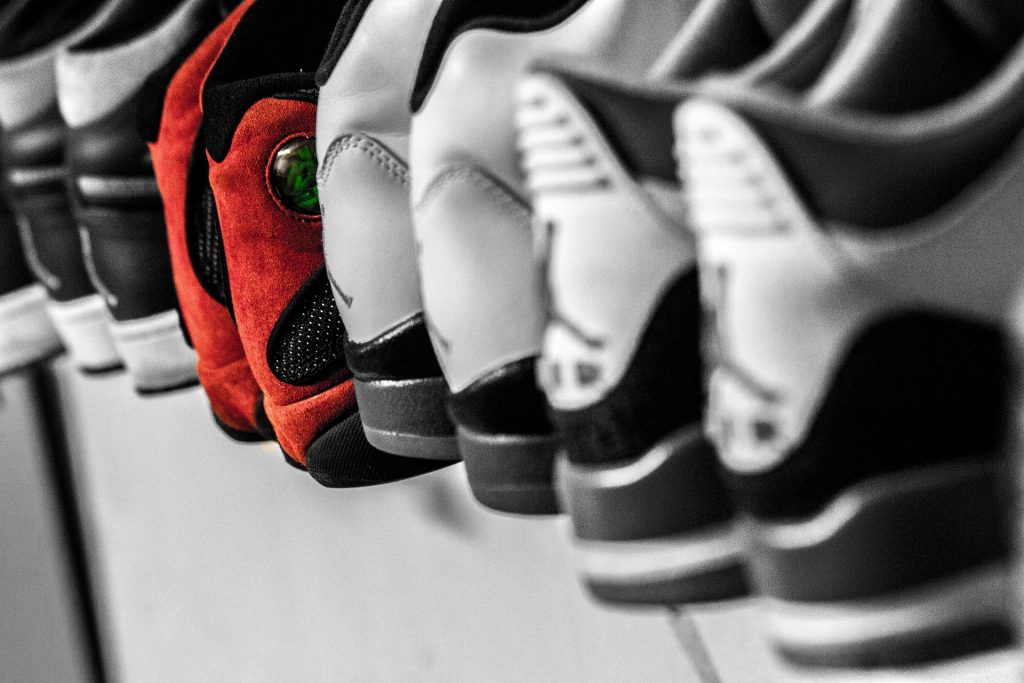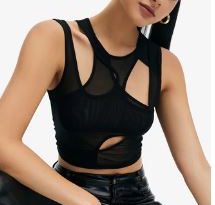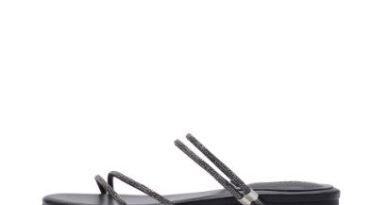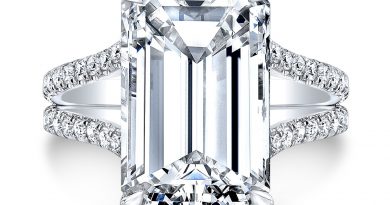11 Pro Tips You Need to Know When Buying Sneakers
In 2021, the sneaker market was valued at $78 billion, and it’s expected to hit $100 billion by 2025. The consistent revenue growth results from the unending high demand for these timeless shoes.
The high demand for sneakers comes with a rise in brands offering sneakers of all designs and makes. So, how do you purchase a pair of sneakers when there are just too many options?
Do you go for style or comfort? Do you buy what’s trendy or go for a classic?
Here are 11 professional tips that make buying sneakers easier for you.
Contents [hide]
1. Determine the Purpose of the Sneaker
What activities will you be using the shoes for? Perhaps you intend to wear sneakers for running, working out, or hiking. You could also need a new everyday shoe to walk around in.
Your choice of sneaker will differ based on the answer to this question. For instance, if you’re looking for a sneaker to run in, you’ll need a lightweight shoe with good cushioning. Also, try to find a shoe with a heel-to-toe drop of 10mm or less to prevent chances of injury.
If you need training shoes, you should wear versatile sneakers that you can use for different workouts, such as lifting weights, doing HIIT exercises, or playing tennis. Look for a shoe with good support and cushioning.
Similarly, if you are looking for walking shoes, search for a comfortable shoe with a cushioned sole. Avoid shoes with too much arch support as this can cause discomfort when walking long distances.
2. Consider the Price
Sneakers can range in price from under $100 to over $1,000. So when buying sneakers, it’s important to compare prices to get the best deal.
The best way to do this is to use an online sneaker retailer that offers a price comparison feature. This step will allow you to see the prices of the same sneaker from different retailers in one place.
In addition, be sure to check for sales and discounts before buying. And keep in mind that the price of the sneaker depends on many factors, such as:
Brand
Some sneaker brands, like Nike and Adidas, are more expensive than others. The reason for this is that these brands have higher quality products. In addition, these brands often release new sneaker models that are more expensive than older models.
However, you must be cautious to ensure the authenticity of your sneakers. For instance, conduct in-depth research before buying Yeezy shoes to ensure you buy originals. Otherwise, you may end up with imitations that come at a lower price but are of poor quality.
Materials
Sneakers made from higher quality materials, like leather, are more expensive than sneakers made from cheaper materials, like synthetic fabrics. Moreover, sneakers with unique features, like waterproofing or extra cushioning, are also more costly.
Functionality
Sneakers designed for specific activities, like running or basketball, are more expensive than general-purpose sneakers. This is because these sneakers often have special features that make them better suited for the activity.
Style
More stylish sneakers, like those made by high-end brands, are more expensive than less stylish sneakers. This is a matter of personal preference, and some people are willing to pay more for a sneaker that they think looks good.
Technology
Sneakers that use new technology, like self-lacing sneakers, are more expensive than older models. These sneakers often have special features that make them better suited for the activity.
Consider your needs and budget when deciding how much to spend on a sneaker. For example, if you’re an athlete who needs shoes for a specific sport, you’ll want to spend more on a sneaker designed for that sport.
If you’re buying a sneaker for everyday use, you can save money by choosing a less expensive model.
3. Consider Your Foot Type
Your foot type is vital in finding a sneaker that fits well. There are three main types of feet:
Neutral
Most people have neutral feet, meaning that your foot does not roll inward or outward excessively when you walk or run. For neutral feet, look for a sneaker with good cushioning and support.
Overpronation
If your foot rolls inward when you walk or run, you have a condition called overpronation. People with overpronation often have low arches or flat feet. When buying a sneaker, look for one with stability features such as a medial (inner) post.
Underpronation (supination)
If your foot rolls outward when you walk or run, you have a condition called underpronation or supination. People with underpronation often have high arches. When buying a sneaker, look for one with good cushioning to protect your foot from impact.
4. Know Your Sneaker Terminology
To make an informed purchase, it helps to know the key features and technologies that are used in sneaker design. Here are some terms you need to know:
Upper: The upper is the shoe part that covers your foot. It’s usually made from leather, mesh, or synthetic materials.
Midsole: The midsole is the layer between the outsole and the insole. It provides cushioning and support.
Outsole: The outsole is the bottom part of the shoe that comes into contact with the ground. It’s mostly made from rubber or polyurethane.
Toe box: The toe box is the front part of the sneaker that covers your toes. It should be wide enough to allow your toes to move freely.
Heel counter: The heel counter is the back part of the sneaker that supports your heel. It should be firm and snug to prevent your foot from slipping out of the shoe.
5. Consider the Material
The sneaker’s material is another important consideration since it affects both the look and feel of the shoe. You have a range of sneaker materials to choose from, which include:
Leather
Leather is a durable material that can mold to your foot over time. It’s a good choice if you’re looking for a shoe that will last long.
Mesh
Mesh is a lightweight and breathable material often used in running shoes. It helps keep your feet cool and dry.
Synthetic
Synthetic materials are often used in conjunction with other materials to create a lightweight and durable sneaker.
A range of factors will help you decide on the ideal material for your sneakers. First, consider the climate you live in. If you live in a hot and humid environment, mesh or synthetic materials are a good choice as they’re breathable and won’t make your feet sweat.
Furthermore, think about your activity level. For example, suppose you’re an active person who does a lot of running or playing sports. In such a case, you’ll need a durable sneaker to withstand the wear and tear. Leather or synthetic materials are a good choice in this case.
Your style preference is also an essential consideration. If you’re looking for a stylish sneaker, leather or synthetic materials are a good option.
6. Make Sure the Sneaker Is Breathable
Breathability is critical if you intend to use the sneaker for exercise, as you don’t want your feet to get too sweaty.
Look for sneakers made from mesh or other breathable materials. Avoid leather or synthetic materials, as they trap heat and moisture.
There are a few ways you can determine how breathable a sneaker is. The first way is to wear sneakers and see how your feet feel after exercising in them. The sneaker is probably not very breathable if your feet are sweaty and uncomfortable.
The material is another determinant of the sneakers’ breathability. Mesh is more breathable than leather or synthetic materials.
You can also check the breathability of sneakers by looking for vents. Some sneakers have vents built into them to improve airflow. These can be found on the sides or top of the sneaker.
Don’t forget to check the insole. The insole is the part of the sneaker that you step on. It’s made from foam or other cushioning materials. So if you can see through the insole, the sneaker is more breathable.
7. Consider the Sole
The sneaker’s sole should provide good cushioning and support for your foot. Cushioning helps absorb the impact of your foot hitting the ground. It’s essential for people with joint problems or prone to injury.
Besides, the ideal sneaker sole should provide adequate support for your foot, especially if you have flat feet or high arches.
Most importantly, check the sole’s stability, especially if you have a condition like overpronation. Look for a sneaker with a medial (inner) post, which is a raised area of the sole that provides extra support.
The thickness of the sole is another essential factor to consider. A thick sole provides more cushioning, while a thin sole gives you a better feel for the ground. Thick soles are often made from foam, while thin soles are mainly made from rubber.
Consider the activity you’ll use the sneaker for when deciding the sole thickness. For example, if you’re buying a sneaker to use for running, you’ll want a thicker sole for more cushioning.
8. Make Sure the Sneaker Is Flexible
The sneaker’s sole should be flexible enough to allow your foot to move freely. This is important for people with high arches, as a flexible sole will provide better support.
To check the flexibility of a sneaker, bend the sneaker from the heel to confirm if the sole bends easily. Also, twist the sneaker from side to side. The sole should twist easily.
9. Choose the Right Size
The best way to determine the right sneaker size is to go to a store and try on different sizes. If you’re buying online, make sure to check the size chart and choose a size that’s appropriate for your foot.
You don’t want a sneaker that is too small or too large as that can cause problems. For instance, if the sneaker is too small, it will be uncomfortable and can cause blisters. On the other hand, if the sneaker is too large, it won’t be easy to walk in and can cause you to trip.
To determine the best sneaker fit, there should be about a thumb’s width of space between the end of your toe and the front of the sneaker.
Moreover, the sneaker should be snug around your foot but not too tight. In addition, you should be able to wiggle your toes. Finally, the heel should be firm and snug without slipping.
10. The Color Matters
When determining how to buy sneakers, the color is often a personal preference. However, some colors are better suited for certain activities.
For example, white sneakers are a good choice for people who walk or often run, as they’re less likely to show dirt. In the same way, when buying a sneaker for a specific sport, like basketball, you’ll want to choose a color that contrasts with the color of the court.
If you’re buying a sneaker for everyday use, choose a color that goes well with your clothes. However, suppose you’re buying a sneaker for a specific sport, like basketball. In that case, select a color that contrasts with the color of the court.
Color can also be used to make a fashion statement. For example, you might choose a brightly colored sneaker to add a pop of color to your outfit.
11. Know the Best Time for Buying Sneakers
The best time to buy new sneakers depends on what you’re looking for. For example, suppose you’re looking for the newest sneaker models. In that case, you’ll want to shop when companies release new products. This is usually in the spring and fall.
In the same way, if you’re looking for the best deals on sneakers, you’ll want to shop during sales. Sales are often held during holidays, like Memorial Day and Labor Day, and at the end of the season, like in August and January.
When shopping for sneakers, consider your needs and budget and take advantage of discounts.
Learn How to Buy New Sneakers and Improve Your Lifestyle and Confidence
Purchasing the perfect sneaker depends on numerous factors. These include the activity the sneaker will be used for, personal style preferences, and of course – budget. With these 11 tips for buying sneakers, selecting the best sneaker for you will be a breeze.
Remember that when buying sneakers, you should not prioritize your friends’ opinions. What works for them might not work well for you. For more insightful guides like this, keep refreshing our site for updates.




